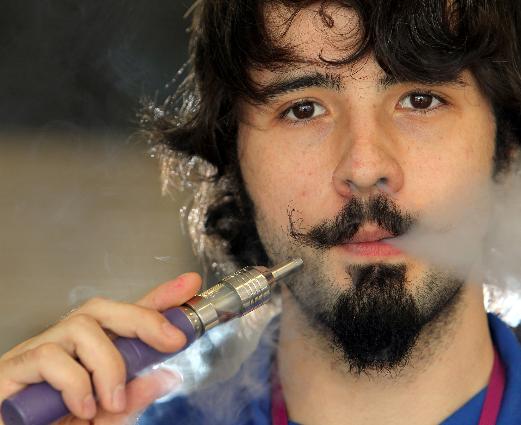Lab tests imply formaldehyde risk in some e-cigarette vapor
By Marilynn Marchione, The Washington Post
Using certain electronic cigarettes at high temperature settings may release more formaldehyde, a cancer-causing chemical, than smoking traditional cigarettes does, new lab tests suggest.
The research does not prove a health risk — it involved limited testing on just one brand of e-cigarettes and was done in test tubes, not people. It also does not mean e-cigarettes are better or worse than regular ones; tobacco smoke contains dozens of things that can cause cancer.
But it does highlight how little is known about the safety of the battery-powered devices, which heat liquid to deliver nicotine in a vapor rather than from burning tobacco.
“It’s a potential red flag,” one independent expert — Stephen Hecht, a tobacco researcher at the University of Minnesota — said of the study. “Under some conditions, e-cigarettes might be generating more formaldehyde than you’d want to be exposed to. But I don’t think we know enough yet. There’s a huge variety in the makeup of these cigarettes and how they are used.”
The study was published last week as a letter in the New England Journal of Medicine. The journal said it had been reviewed by experts in the field.
Formaldehyde is found in many things, including building materials and disinfectants. An earlier study found e-cigarettes generated less formaldehyde than regular ones, but that study looked at just the gas portion of the vapor. The new one looked at the liquid particles in the vapor, like the spray from an aerosol can.
Some e-cigarette systems let users turn up the voltage to increase the heat and the amount of liquid in the vapor. David Peyton, a chemist at Portland State University, and colleagues tested one brand with two voltage settings. They used a syringe to collect vapor from 10 samples, each one representing several puffs, at both voltage levels.
They measured formaldehyde hemiacetal — a compound that can release formaldehyde — in the liquid portion of the vapor.
At low voltage, the chemical was not detected. But at the high setting, levels were five to 15 times as great as the amount of formaldehyde users would get from traditional cigarettes.
Virtually all e-cigarettes use similar materials in the heated liquid, so the formaldehyde finding “is not brand-dependent,” Peyton said.
However, Gregory Conley, a lawyer with the American Vaping Association, an advocacy group for e-cigarettes, criticized the study methods. “They use the device in a manner that no one does,” he said.
What the researchers did, he said, is like leaving a steak on a grill all day: Many cancer-causing substances might be formed, but no one would eat such charred meat.
— Associated Press
http://www.washingtonpost.com/national/health-science/lab-tests-imply-formaldehyde-risk-in-some-e-cigarette-vapor/2015/01/26/6f36fd9a-a266-11e4-b146-577832eafcb4_story.html

